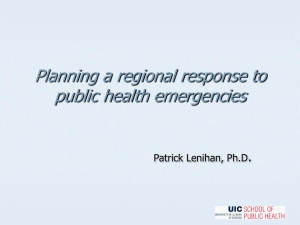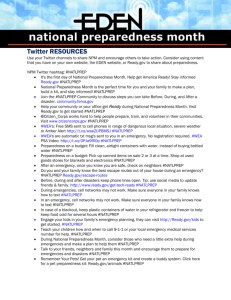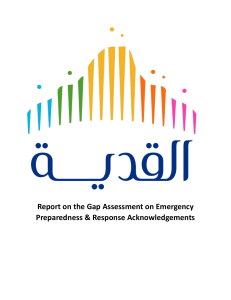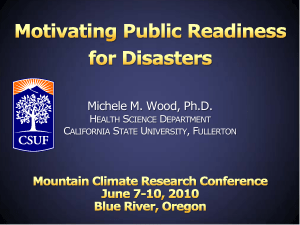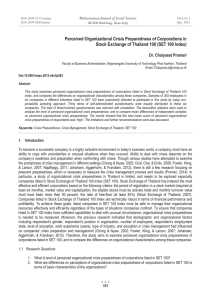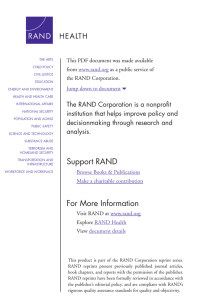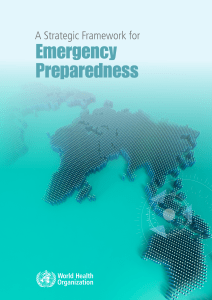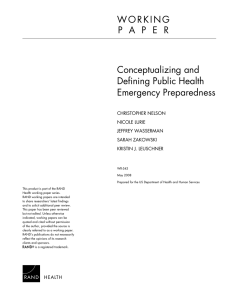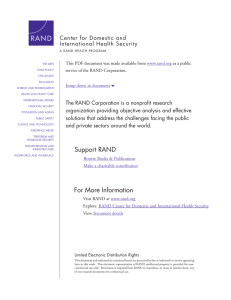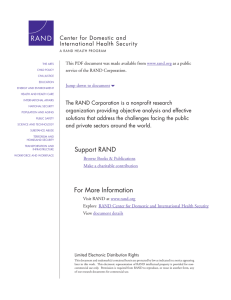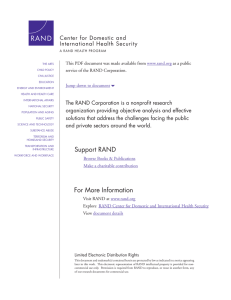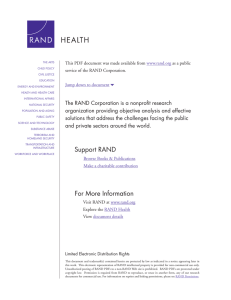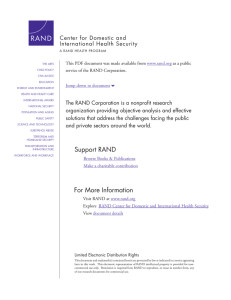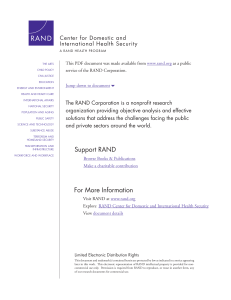Planning a regional response to public health emergencies Overview
advertisement
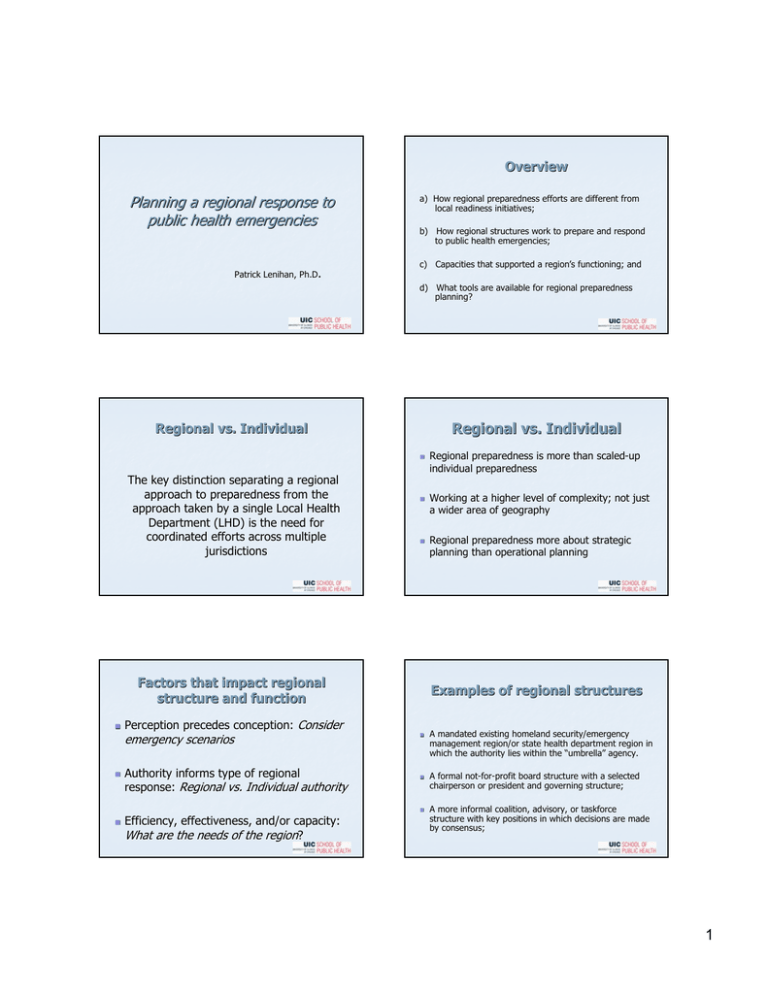
Overview Planning a regional response to public health emergencies a) How regional preparedness efforts are different from local readiness initiatives; b) How regional structures work to prepare and respond to public health emergencies; c) Capacities that supported a region’ region’s functioning; and Patrick Lenihan, Ph.D. d) What tools are available for regional preparedness planning? 2 Regional vs. Individual Regional vs. Individual The key distinction separating a regional approach to preparedness from the approach taken by a single Local Health Department (LHD) is the need for coordinated efforts across multiple jurisdictions Regional preparedness is more than scaledscaled-up individual preparedness Working at a higher level of complexity; not just a wider area of geography Regional preparedness more about strategic planning than operational planning 3 4 Factors that impact regional structure and function Examples of regional structures Perception precedes conception: Consider emergency scenarios Authority informs type of regional response: Regional vs. Individual authority Efficiency, effectiveness, and/or capacity: What are the needs of the region? 5 A mandated existing homeland security/emergency management region/or state health department region in which the authority lies within the “umbrella” umbrella” agency. A formal notnot-forfor-profit board structure with a selected chairperson or president and governing structure; A more informal coalition, advisory, or taskforce structure with key positions in which decisions are made by consensus; 6 1 How regions function Networking: How regions function Sharing preparedness information (e.g., recent reports, grant guidance), approaches to planning, press releases, exercise results, or staff organizational charts Coordinating: Standardizing: Centralizing: Conducting joint exercises, trainings, ‘strike’ strike’ or response teams, or a regional project such as a media campaign. Trainings, planning tools, plan content and format (such as annexes), resource typing, job action sheets, and even ‘triage tags’ tags’ that emergency medical services could use throughout the region. Resources such as a single web portal, an emergency notification system centralized through a regional coordinator, a single regional training contractor or regional staff (e.g.,GIS specialist). 7 8 Capacities that Support & Challenge Regional Functioning Staff time Agency support Leadership body Established regional relationships State requirements Authority to plan and respond Relationship with the state Resources to sustain regional work Questions to Consider: 9 9 9 9 9 9 9 9 What entities involved in Emergency Response (ER) exist in my community? What ER capacities already exist in my region? What are the state requirements for staff and other agencies involved in ER? How will the region develop or enhance relationships needed to access information, resources, and other state support? How will my region support regional efforts? Who will be involved in the regional efforts to provide technical oversight and support? Who can declare an emergency? 10 Project Public Health Ready Helps Improve Regional Preparedness Operated by the National Association of County and City Health Officials (NACCHO) Provides a template to structure regional planning Comprehensive “to do” do” list in the form of criteria Established and tested national framework National Recognition Program Linked to tools and examples Network of regional sites for peer assistance 11 2
